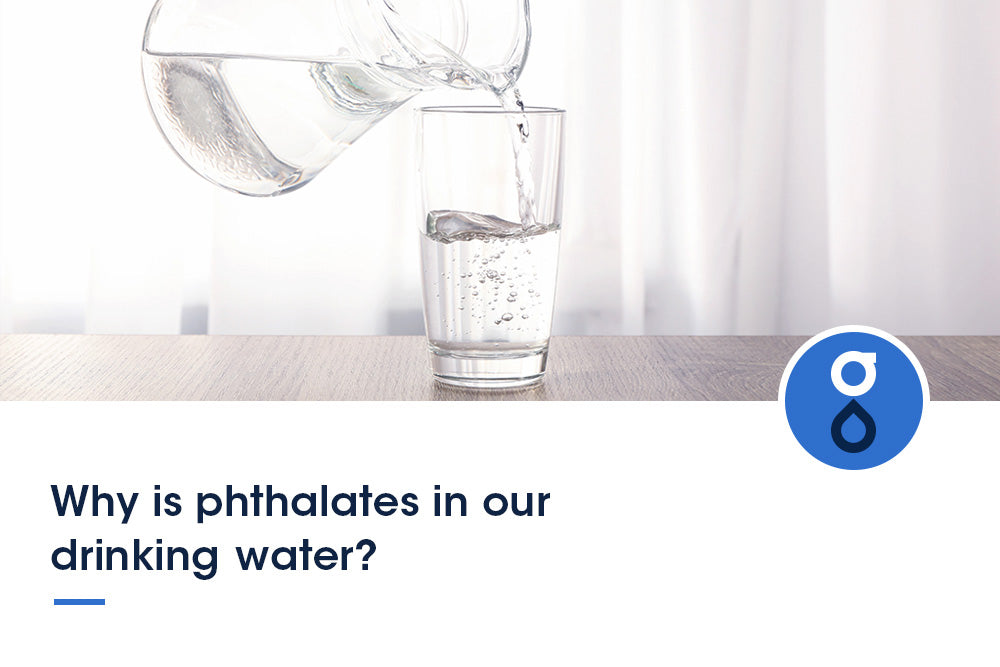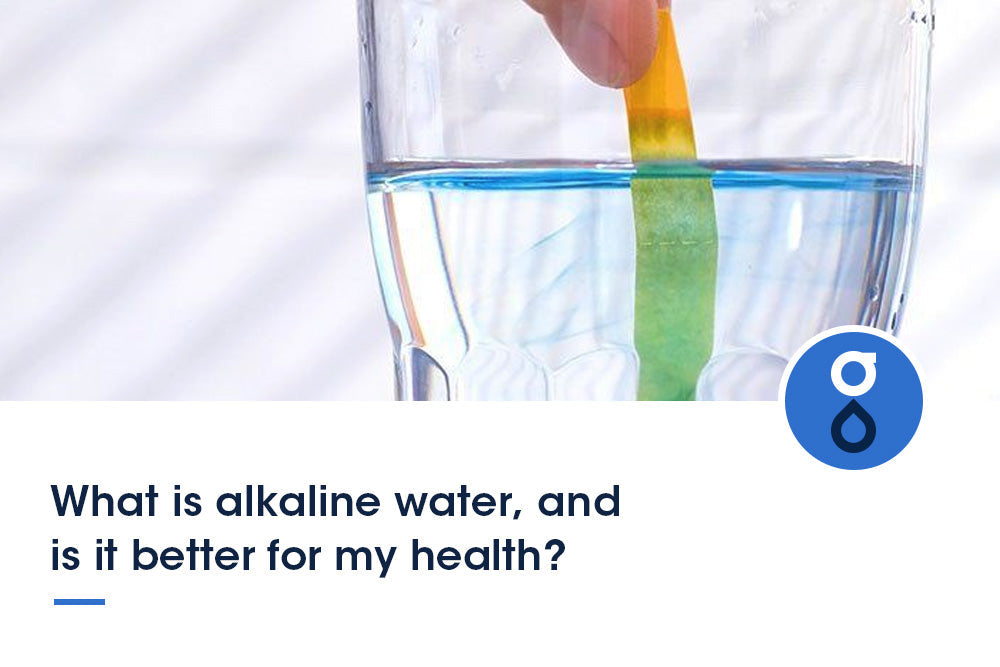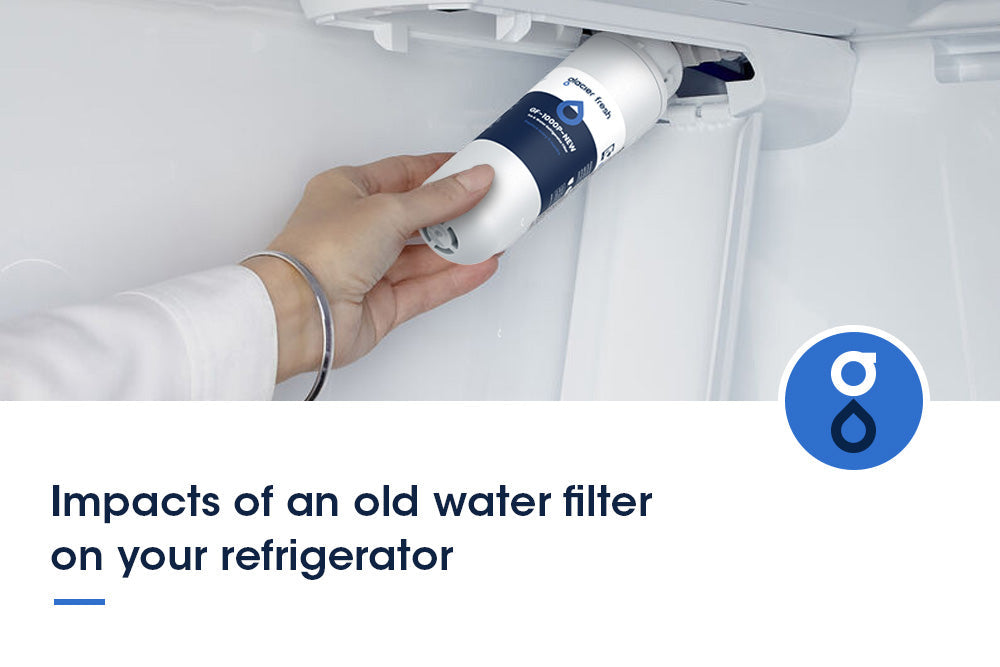Table of Contents:
What are phthalates
Why are phthalates in drinking water
Are phthalates harmful to your health
What products contain phthalates
How to test phthalates in your water
Methods to remove phthalates from water
What steps can you take to protect your health
Conclusion
Have you ever wondered what is actually in your drinking water? It may come as a surprise that it contains traces of a chemical called phthalates. This ubiquitous chemical can be found in everything from food packaging to cosmetics, but why is it also in our drinking water? This article will explore the potential health risks of phthalates, where they are found, and how to test for them in your water supply. We'll also discuss how to move them out of your drinking water and how to protect yourself and your family from their potentially harmful human health effects. So grab a glass of water, and let's get started!
What are phthalates?
Phthalates are a group of chemical compounds commonly used in everyday items such as plastics, cosmetics, and fragrances. They are often described as "plasticizers" because they make plastic products more flexible and durable. They can be found in everyday household items such as plastic bottles, flooring, furniture, shower curtains, and children's toys. Phthalates have been linked to reproductive issues in both humans and animals. In addition to being present in everyday products, phthalates have also been detected in our drinking water. Water passing through treatment plants or storing them for long periods can absorb these dangerous chemicals from plastic pipes or storage tanks. Phthalates in drinking water can cause serious health risks, including reproductive problems, hormone disruption, and even cancer.
It is essential to take steps to reduce human exposure to phthalates. This can include filtering your water before drinking it or using BPA-free plastics bottles for storing food or beverages. It is also essential to avoid buying products made with phthalates whenever possible. By taking these proactive steps, you can help protect yourself from the potential risks of consuming phthalates-contaminated drinking water.
Why are phthalates in drinking water?
Phthalates are a family of chemicals commonly used in plastics, fragrances, and other household products. While they are essential to many modern products, they have been linked to various potential health risks when found in drinking water supplies.

The primary source of phthalate contamination in our water is human activities such as industrial production processes, wastewater treatment plants, and improper disposal of materials containing these chemicals. These contaminants can also enter our water sources through run-off from agricultural land and nearby landfills where these chemicals are used or disposed of.
Unfortunately, phthalates do not break down quickly once they enter the environment and can stay present for long periods. As a result, it is essential to monitor our waterways for the presence of these chemicals to ensure that we are not exposed to unsafe levels. Additionally, steps should be taken to reduce unnecessary use or release of these compounds into our environment whenever possible. While phthalates are an unfortunate reality in our drinking water supply, some steps can be taken to reduce human exposure to these potentially hazardous contaminants. By using filtered or bottled water for drinking needs and avoiding products containing these compounds when possible, we can help protect ourselves from potential health risks associated with phthalate contamination in drinking water sources.
Are phthalates harmful to your health?
Research has shown that daily exposure to phthalates can cause a variety of human health risks including:
Endocrine disruption
Endocrine disruption is a growing concern among scientists and medical professionals worldwide. It occurs when our body's hormones, or chemical messengers, are thrown out of balance due to exposure to certain chemicals like phthalates. When ingested in high doses, phthalates can act as endocrine disruptors and interfere with our hormone systems, causing severe health problems like infertility or cancer.
Reproductive issues
Reproductive health is an essential concern for all individuals. Many reproductive issues can arise from various causes, including environmental toxins, lifestyle factors, and even genetic predispositions. Low fertility rates, miscarriages, and congenital disabilities are some potential risks associated with poor reproductive health. It is essential to be aware of these risks and take steps to reduce our levels where possible. This may include limiting the consumption of processed foods with high exposure levels of toxins or endocrine-disrupting chemicals such as phthalates or bisphenol A (BPA).
Knowing where these chemicals may be present is essential to avoid potential health risks from prolonged exposure. Therefore, individuals must understand the potential dangers associated with phthalate contamination in drinking water supplies and take steps to minimize their risk of exposure.
What products contain phthalates?
When shopping for products, look for items labeled "phthalate-free" or "BPA-free." Standard products that may contain phthalates include:
· Cosmetics and personal care products

Cosmetics and personal care products have become ubiquitous in our daily lives, and, unfortunately, many of them contain phthalates, such as perfume, nail polish, hair spray, soap, shampoo, and skin moisturizers. These chemicals make fragrances last longer and soften plastics but can be hazardous to human health when ingested or absorbed through the skin.
· Medical tubing and fluid bags
Medical tubing and fluid bags are essential components in the healthcare industry, often used to transport or deliver medications, fluids, and blood products. However, due to their frequent use and contact with bodily fluids, medical tubing, and fluid bags can be a potential source of phthalate exposure. Phthalates are plasticizers that may leach from the materials used in these products into the liquids they contain.
· Plastic plumbing pipes
Plastic plumbing pipes are a common choice for many residential and commercial projects due to their durability, cost-effectiveness, and ease of installation. However, plastic piping can also be a source of phthalate exposure in drinking water. Phthalates are chemicals used to make plastics soft and pliable, and they can leach into drinking water if the piping contains them. This is especially concerning for pregnant women or those with weakened immune systems, as phthalate exposure has been linked to reproductive and other health problems.
· Wood finishes
Wood finishes are an integral part of many construction projects. They provide protection from the elements, enhance the natural beauty of wood, and can make a home more aesthetically appealing. However, some wood finishes may contain potentially phthalates. Phthalates are used to soften plastics and can leach into the air or water if present in a finish. It is recommended that only low-VOC or VOC-free wood finishes be used in any project where people may come into contact with them.
· Vinyl flooring

Vinyl flooring is a popular choice for many homeowners due to its affordability and ease of installation. Vinyl floors are often chosen for their water-resistant properties and durability, making them ideal for kitchens, bathrooms, mudrooms, and other high-traffic areas. However, because vinyl is made from polyvinyl chloride (PVC) plastic, it can contain phthalates linked to health issues like hormonal imbalance and cancer.
In addition to the products mentioned above, they may include:
· Detergents · Adhesives · Lubricants
· Solvents · Insecticides · Building materials
· Shower curtains
Foods linked to higher phthalate levels include:
· Restaurant, cafeteria, and fast foods · High-fat dairy
· Fatty meats and poultry · Cooking oils
By being mindful of what you buy and using safer alternatives whenever possible, you can help reduce your exposure to these potentially harmful chemicals.
How to test phthalates in your water?
Testing for phthalate levels in drinking water is a significant health concern. The best way to test for phthalate level in drinking water is to use a home testing kit from a reputable source. These kits allow you to collect and send samples for laboratory analysis at home. A lab will be able to identify the presence of any amount of phthalate that may be present in your sample. Testing kits are relatively inexpensive and easy to use; however, they may not be as accurate as professional testing done by a certified lab.
Suppose you have any concerns about the safety of your drinking water. In that case, it is always best to consult with an expert or contact your local public health department before taking action. They will be able to advise on the steps you can take to ensure your drinking water is safe and free from hazardous contaminants like phthalates.
Methods to remove phthalates from water?
Reverse osmosis filtration system
Reverse osmosis filtration systems are an effective and reliable method of removing pollutants such as phthalates from drinking water. The process works by forcing water molecules through a special membrane under pressure, trapping and eliminating contaminants from the water before it reaches your faucet. This produces clean, safe drinking water free from potentially hazardous chemicals. Reverse osmosis filtration systems can be costly and may require professional assistance to set up correctly. Still, they are well worth the investment for those looking for the highest quality of drinking water available. In addition to removing phthalates, reverse osmosis filtration systems can filter out contaminants such as lead, chlorine, bacteria, pesticides, and heavy metals.
Activated carbon filtration

Activated carbon filtration is an effective way to remove contaminants such as phthalates from drinking water. This process passes the water through a filter containing activated carbon granules, which absorb and trap pollutants before they reach your tap. The result is clean, safe drinking water free of potentially hazardous chemicals. Activated carbon filtration systems are relatively inexpensive and easy to install and maintain, making them an ideal option for those who want to reduce their exposure to phthalates. In addition to removing phthalates, these systems can filter out other contaminants such as lead, chlorine, bacteria, pesticides, and heavy metals.
If you are concerned about phthalates in your tap water or want to ensure that you have the highest drinking water possible, installing an activated carbon filtration system may be a good choice. It is important to note that while this method can remove many pollutants from your tap water, it cannot guarantee that all phthalates will be removed; therefore, further testing may still be necessary.
Boiling or distilling
Boiling or distilling is another method that can be used to remove phthalates from drinking water. Boiling the water for at least 10 minutes kills any bacteria and other microorganisms present, ensuring it is safe to drink. However, boiling does not necessarily remove any chemical contaminants such as phthalates. Distillation involves heating the water until it evaporates and then collecting the vapor in a separate container, leaving many pollutants behind. This process removes most phthalates from the drinking water, although some of these chemicals may remain in trace amounts.
Boiling or distilling can make drinking water safer, but they do not protect completely against all contaminants, including phthalates. Both processes require energy and can be time-consuming; therefore, installing an activated carbon filtration system for long-term use may be more cost-effective.
What Steps Can You Take to Protect Your Health?
Protecting your health from environmental contaminants such as phthalates is paramount. Taking proactive steps to reduce exposure and protect yourself can make a difference.
First, testing your drinking water for phthalates and other toxins is essential. You can contact your local water authority or utility company to learn more about your area's testing options. It would also help to reduce your consumption of processed foods and beverages, which may contain high levels of phthalates.
Another way to protect yourself is to switch to natural cleaning products, such as baking soda, vinegar solutions, or homemade soaps. These natural solutions are safer for the environment and less likely to contain traces of phthalates.
Finally, stay informed about changes in legislation or regulations related to environmental protection; these changes may affect the number of toxins we are exposed to daily. Additionally, it may be beneficial to join local environmental organizations to stay current on the latest news regarding our environment and how best to protect ourselves from harm.
These simple steps help keep yourself safe from harm caused by dangerous toxins like phthalates and other environmental contaminants.
Conclusion
Overall, being aware of phthalates in our drinking water is essential. We need to know the safe levels and how we can tell if our drinking water contains them. It's also necessary for us to recognize the long-term health effects these chemicals can have on us and their environmental consequences. With this knowledge, we can make informed decisions about protecting ourselves from potential dangers posed by phthalates in our drinking water.
















